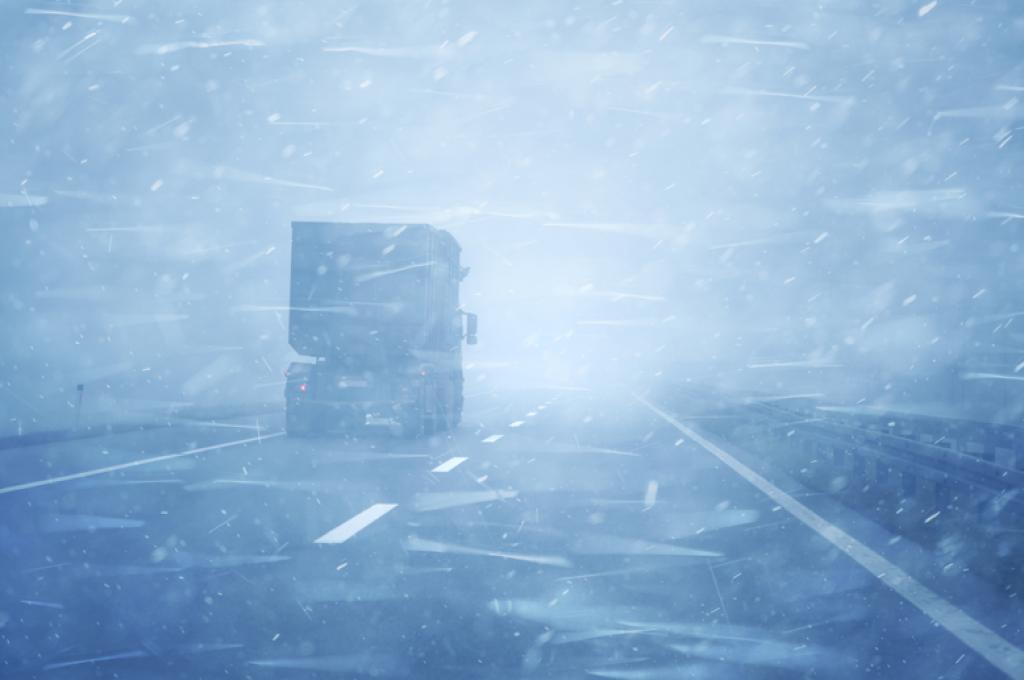Most of us have been duped by an inaccurate forecast. Your weather app tells you it’s sunny, only to get caught in the rain on your way to work. But some have more at stake when it comes to weather prediction.
Farmers, insurance companies and snow removal and trucking companies all rely on precise forecasting to run their business.
That’s where Weatherlogics comes in. The Winnipeg-based company provides sophisticated weather information that includes things like hail storm tracking and pavement temperatures to help clients make better-informed decisions and save money.
Most forecasts found online are automatically generated by computer algorithms, but Weatherlogics applies their expertise and specialized computer models to reams of weather data from around the world to give a more in-depth analysis.
“When a meteorologist produces a forecast they’re able to assess all the uncertainties and produce a more descriptive and accurate weather prediction for clients than the usual forecast you’d find on a weather app” says Scott Kehler, who co-founded the company in 2017 when he was finishing his master’s degree in meteorology at the University of Manitoba.
One service unique to the company is Road Weatherlogics –– a map of highway conditions that trucking companies, for example, can use to make safe decisions when routing freight to their destinations.
The map identifies specific areas where there might be serious hazards including blowing snow or freezing rain and also where roads might be covered with frost, slush, snow or ice.
Where most weather websites only give current road condition information, the Weatherlogics map provides forecasts of road conditions every hour forecasted over the next 48 hours, so drivers can plan based on what lies ahead rather than assume that current conditions will still be accurate by the time they arrive.
“An accident could cost a transportation company up to $50,000 in insurance claims,” Kehler says. “If we can warn a trucking company about a winter storm to come, that can improve their efficiency and also improve the safety of their drivers.”
Knowing road temperatures can also help cities make important decisions about snow plowing, or when to apply salt, sand, or liquid chemical to prevent ice from forming.
“Salt is only effective down to about minus 13 degrees Celsius so if they know the pavement temperature is going to drop below that they’ll use sand instead,” says Kehler.
For insurance companies, there are huge cost-savings when it comes to accurate weather prediction. According to the Insurance Bureau of Canada extreme weather has caused $10 billion in damage since 1998.
Weatherlogics also interprets radar imagery to help insurance companies determine exactly where a storm hit to help weed out fraudulent claims and determine future risk.
“If they know the risk they can set their premiums so that in the long run they’re not going to lose money off insuring homes because they know the risk of having to pay out claims,” says Kehler.
For farmers, knowing the right time to apply fertilizer or pesticides or when to begin harvesting or seeding is largely dependent on weather. Knowing the optimal time to do so can avoid wasted product and save time and money.
“Knowing how to optimize that for weather conditions is something that could save them a lot of money over just using a less-sophisticated forecast that comes from somewhere else,” says Kehler.
Since the company’s inception the co-founders have added a full-time computer programmer to the team and two part-time employees. The company currently serves about 100 clients in a range of industries.
Kehler says he has always been interested in weather, but working with CFI-funded researcher John Hanesiak at the University of Manitoba gave him the knowledge and research experience he needed to create the company.
“We studied a lot about thunderstorms, especially how they develop, and we use that information now to advise clients on thunderstorm trends or possible severe thunderstorm events across Canada,” Kehler says.
During his master’s, Kehler worked with Hanesiak on a research project that looked at how thunderstorms tend to form at night, an important question since nocturnal storms are more difficult to predict than those that occur during the day.
Overnight thunderstorm formation is particularly common in the prairies, Kehler says, and knowing why thunderstorms form at night also informs forecasters of severe weather risks.
He studied low-level jets –– a type of wind that develops at night above ground level and can reach a wind speed of up to 100 kilometres per hour. Warm and humid air can then get lifted upward and create conditions ideal for thunderstorms.
CFI-funded LIDAR technology provided the researchers with wind speeds and directions, and a microwave radiometre helped them identify any triggers like hot or cold fronts that might force a low-level jet to rise.
Now, Kehler is busy finding ways to grow his company. Besides refining their Road Weatherlogics technology, he says he wants to expand the company’s offerings to include more detailed climate data.
“You can find record high and low temperatures in cities across the country, but we want to provide more detailed information on humidity or wind speeds or consecutive days with certain weather conditions and all sorts of more unique statistics that haven’t really been available in the past,” he says.
Kehler says this type of information could be useful for city planners and emergency preparedness.
“We’ve got a pretty good dataset together but we’re planning to really grow that part of the business later this year. I think we’ll uncover a lot of new opportunities.”





